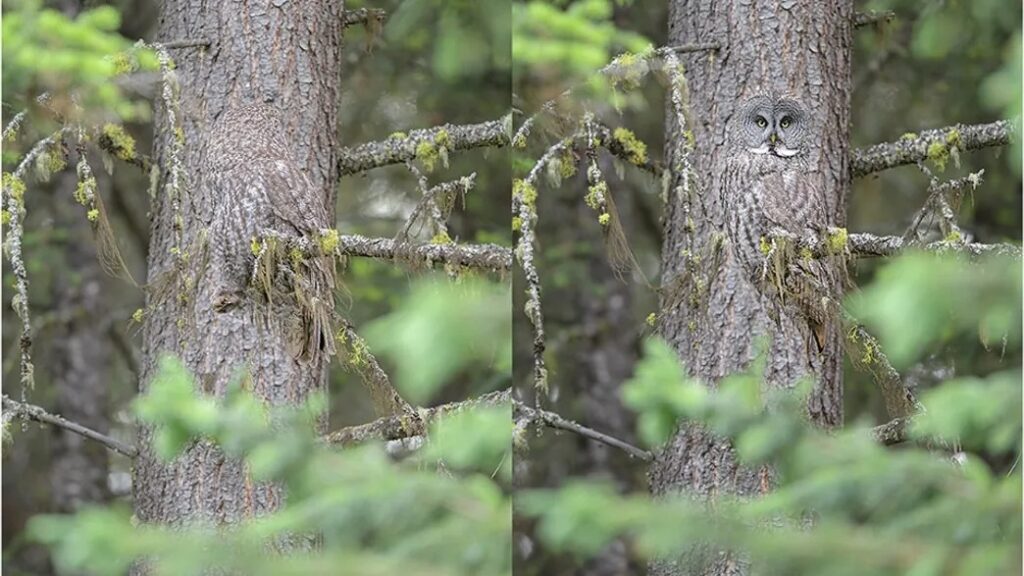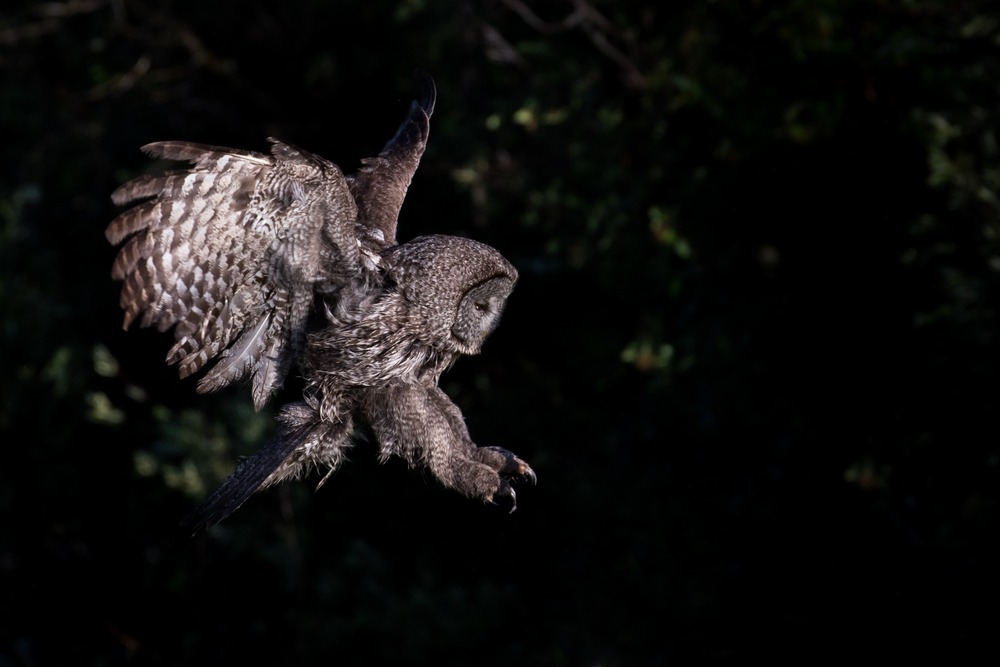
In the vast expanse of nature, there are creatures that have mastered the art of concealment, and one such magnificent example is captured in an awe-inspiring image by bird and nature photographer Alan Murphy. Nestled among the spruce and pine trees of the Canadian forests, a great gray owl seems to dissolve into the background, revealing just how inconspicuous nature’s top predators can be.
Alan Murphy shared the photograph on his Facebook page, recounting his experience, “While searching the forests of British Columbia for birds to photograph, I came across this guy. It’s like finding a needle in a haystack. See if you can see the Great Gray Owl. Nature is amazing!!” In the image, the great gray owl is nearly indistinguishable from its forest surroundings, a true testament to the wonders of nature’s camouflage.
Another captivating side-by-side comparison provided by Alan showcases the owl glancing towards the camera, wherein only the outline of its face stands out distinctly against the tree bark. The mastery of blending into its environment is a survival tactic utilized by great gray owls (Strix nebulosa) to sneak up on small prey, such as voles, gophers, and other rodents.

“The Great Gray Owl is the world’s largest owl, not by weight but by length,” revealed Murphy. These majestic owls depend on healthy coniferous and mixed forests with trees large enough to accommodate their spacious nests.
Montana-based avian biologist, William Blake, explained the unique hunting strategy of these magnificent owls, “The way they hunt is that they find perches and they stand quietly in one spot. They have really good eyesight, but that doesn’t necessarily do the entire trick in order to catch their prey.” Unlike smaller birds that use camouflage to evade predators, great gray owls employ cryptic coloring to better stalk their quarry.
During the nesting period, the male great gray owl takes on the responsibility of hunting, while the female tends to the chicks. With vast experience in the region, Murphy shared his familiarity with the location of a couple of nests that are frequented by these avian inhabitants year after year.
Great gray owls are masters of surprise, keenly observing the forest floor from their perches and discreetly closing in on unsuspecting prey. Blake further elaborated on their hunting methods, stating, “Once they see one, the goal is for them to approach them in a very silent manner, and their camouflage helps them not be seen by the prey they’re about to pounce on.”
In the warm months, these owls prefer hunting from low posts or stumps on the ground, intently watching and listening for mice and voles. In the winter months, with the landscape covered in snow, they adapt and hunt from higher positions.
Remarkably, great gray owls possess large facial discs that focus sound, and their ears are asymmetrical, enabling them to triangulate the sound and pinpoint their prey, even under two feet of snow. As Murphy explained, “When the owl’s head is bobbing and swaying from side to side, they are triangulating the sound in front of them. Once the movement is located under the snow, they will dive down their own body length into the snow to catch the prey.”

With dedicated conservation efforts, both the North American and Eurasian great gray owl populations have been witnessing growth. Today, there are believed to be between 50,000 and 99,000 individuals thriving in the wild.
The mesmerizing image of the great gray owl, effortlessly blending into its surroundings, reminds us of the fascinating and complex ways in which nature adapts to survive. It serves as a stunning testament to the remarkable diversity and beauty that exist in the natural world, urging us to cherish and protect these magnificent creatures and their habitats for generations to come.

Leave a Reply